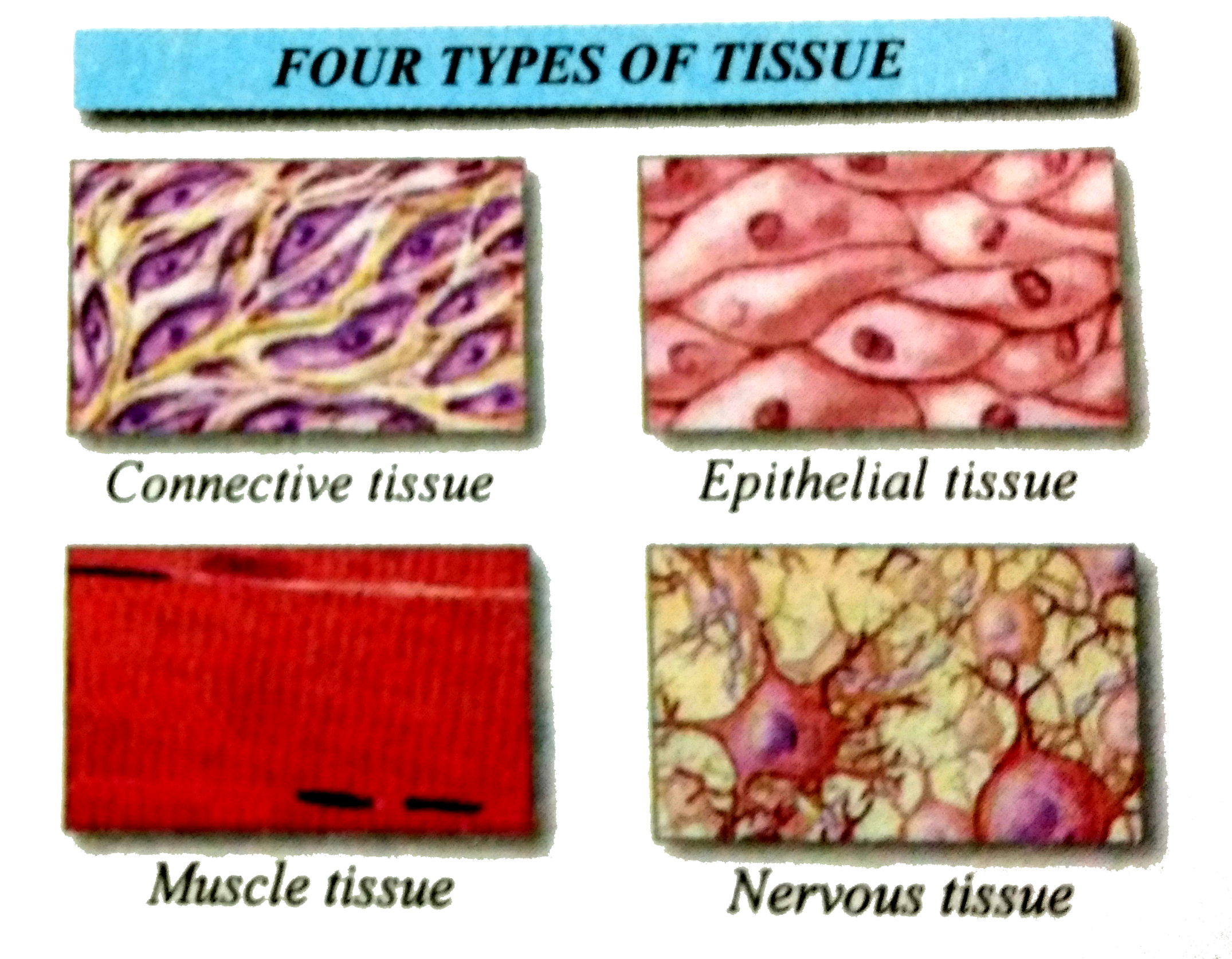What is a tissue? What are its kinds?
Step-by-Step Solution:
1. Definition of Tissue:
- A tissue is defined as a group of cells that are similar in structure and function. These cells work together to perform a specific task or function in an organism.
2. Types of Tissues:
- Tissues can be classified into two main categories:
- Simple Tissue: This type consists of only one kind of cell. The cells in simple tissues are similar in structure and function.
- Complex Tissue: This type consists of more than one kind of cell. The cells in complex tissues perform different functions but work together.
3. Subcategories of Simple Tissue:
- Simple tissues can be further divided into three types:
- Parenchyma: These are living cells that are involved in storage, photosynthesis, and tissue repair.
- Collenchyma: These cells provide support and flexibility to the plant, especially in young stems and leaves.
- Sclerenchyma: These are dead cells that provide rigidity and strength to the plant structure.
4. Subcategories of Complex Tissue:
- Complex tissues can be further divided into two main types:
- Xylem: This tissue is responsible for the transport of water and minerals from the roots to the rest of the plant. It consists of four types of elements: tracheids, vessel elements, fibers, and parenchyma.
- Phloem: This tissue is responsible for the transport of food (sugars) produced by photosynthesis from the leaves to other parts of the plant. It consists of four types of cells: sieve elements, companion cells, phloem fibers, and phloem parenchyma.
Summary:
- A tissue is a group of similar cells that perform a specific function.
- There are two main types of tissues: simple and complex.
- Simple tissues include parenchyma, collenchyma, and sclerenchyma.
- Complex tissues include xylem and phloem.
- A tissue is defined as a group of cells that are similar in structure and function. These cells work together to perform a specific task or function in an organism.
- Tissues can be classified into two main categories:
- Simple Tissue: This type consists of only one kind of cell. The cells in simple tissues are similar in structure and function.
- Complex Tissue: This type consists of more than one kind of cell. The cells in complex tissues perform different functions but work together.
- Simple tissues can be further divided into three types:
- Parenchyma: These are living cells that are involved in storage, photosynthesis, and tissue repair.
- Collenchyma: These cells provide support and flexibility to the plant, especially in young stems and leaves.
- Sclerenchyma: These are dead cells that provide rigidity and strength to the plant structure.
- Complex tissues can be further divided into two main types:
- Xylem: This tissue is responsible for the transport of water and minerals from the roots to the rest of the plant. It consists of four types of elements: tracheids, vessel elements, fibers, and parenchyma.
- Phloem: This tissue is responsible for the transport of food (sugars) produced by photosynthesis from the leaves to other parts of the plant. It consists of four types of cells: sieve elements, companion cells, phloem fibers, and phloem parenchyma.
- A tissue is a group of similar cells that perform a specific function.
- There are two main types of tissues: simple and complex.
- Simple tissues include parenchyma, collenchyma, and sclerenchyma.
- Complex tissues include xylem and phloem.
Topper's Solved these Questions
Similar Questions
What is tissue ?
View SolutionWhat is tissue? What are the functions of tissue?
View SolutionWhat is tissue culture ?
View SolutionWhat is tissue? Which are the functions of tissue?
View SolutionWhat is tissue? Which are the functions of tissue?
 View Solution
View SolutionWhat is respiratory substrates? What are the kinds of respiratory substrates?
View SolutionWhat is 'tissue culture'?
View SolutionWhat is xylem tissue ? Name the two kinds of cells in xylem tissue. State whether these cells are living or dead.
View SolutionWhat is epithelial tissue ? Give its characteristics and fucntions.
View SolutionWhat are epithelial tissues? What is their function and how is that function associated with the features of the tissue?
View Solution

